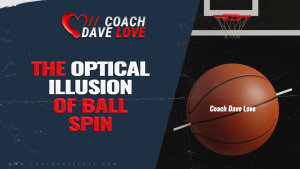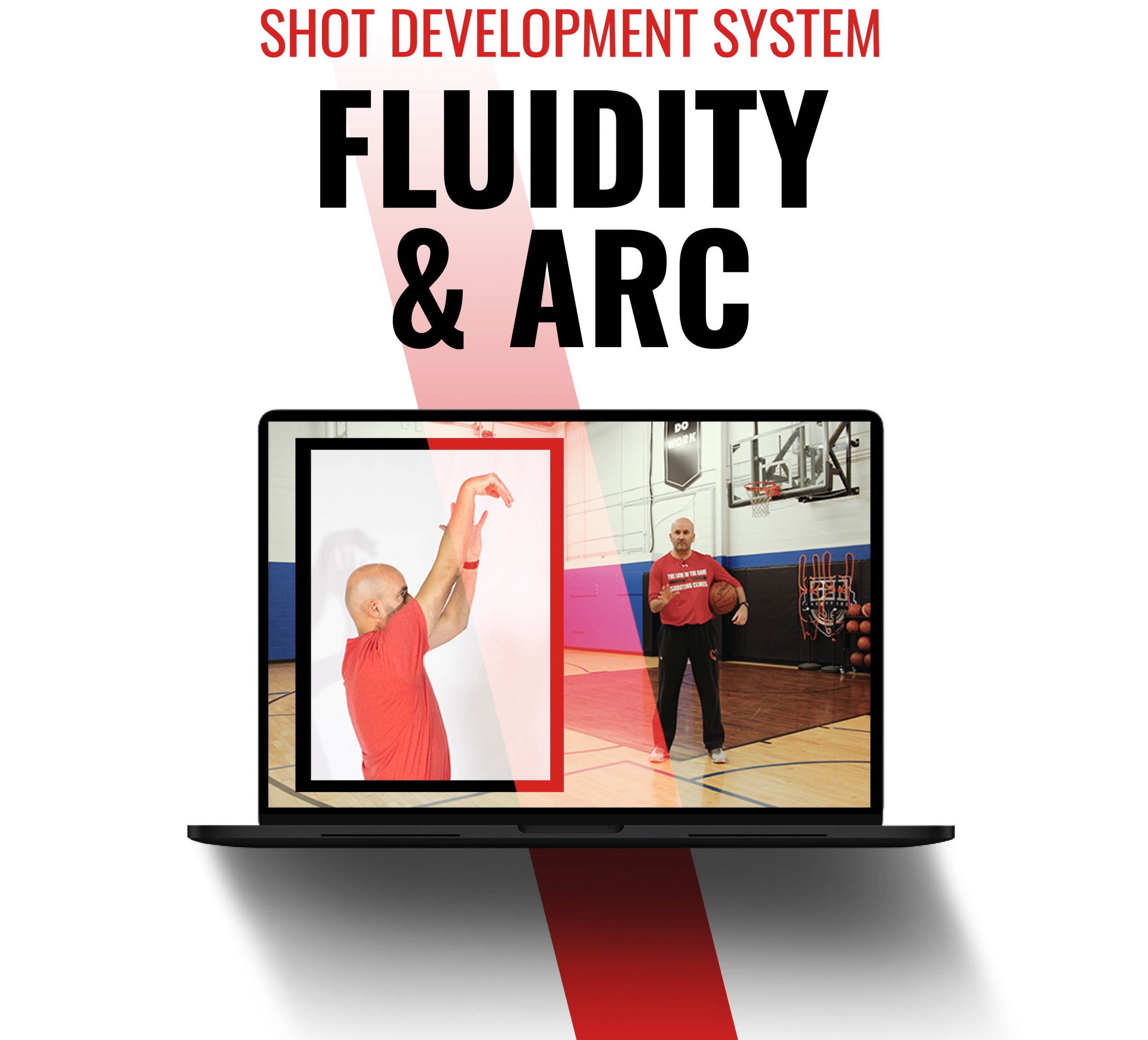There are a few different systems that teams will use to track shooting data. They measure all kinds of data points, including where the ball enters the rim, and at what angle.
Those systems say the idea ARC for the balls ENTRY into the hoop is between 43 and 47 degrees. A player with a flat shot will be closer to 41. Someone with high arc, might be 49-50.
I started working with an NBA 53% free throw shooter, and when we measured his arc it was typically around 39 degrees. It felt like he was hitting line drives at the rim.
The next season he shot 75% from the line, and now is in the mid-80s. I want to explain some of the factors that helped him make more shots.
My goal is to help you develop your own ideas and progressions of drills that will help you make more shots. But if you want to get the SYSTEM OF DRILLS I USE WITH MY NBA PLAYERS – YOU CAN GET MY SHOT DEVELOPMENT SYSTEM – FLUIDITY AND ARC HERE.
WHY DOES ARC EVEN MATTER?
Let’s start with how ARC helps you make more shots. The flatter your shot gets, the smaller the surface area the ball has to fit through, and the higher the arc gets, the more room the ball has to fit through.
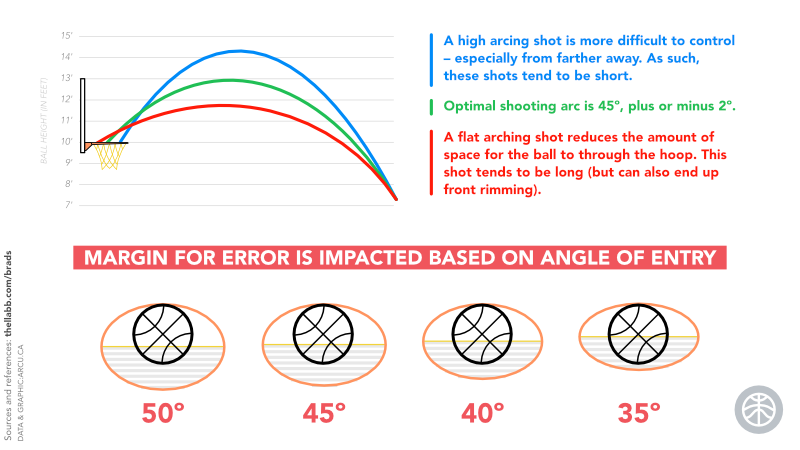 Here is the detailed description: the ball needs to have its bottom get OVER the front rim, but also have the equator of the ball below the rim level when it gets to the back of the rim. If it doesn’t do both of those things, the ball is going to hit the rim and bounce up and likely away from the rim.
Here is the detailed description: the ball needs to have its bottom get OVER the front rim, but also have the equator of the ball below the rim level when it gets to the back of the rim. If it doesn’t do both of those things, the ball is going to hit the rim and bounce up and likely away from the rim.
The steeper the entry angle, the more area the ball has to clear the front of the rim and get down before the back of the rim.
So we want to make sure we are lifting the ball up in the air, and dropping it down on the target, not shooting the ball AT the hoop.
Is your shot flat? CLICK HERE TO GET ALL THE DRILLS AND TEACHING POINTS YOU NEED TO MAKE MORE SHOTS.
HOW DO WE GENERATE ARC?
There are a few things that go into getting great arc, but sometimes coaches focus on the the obvious things that help a little, and miss the small details that help a lot.
Yes, we do want to use our legs, and yes, holding your followthrough won’t hurt, but those don’t actually do a lot in creating arc.
We want to focus more on the position of the hand on the ball at the set point, and the move of the elbow leaving the set point.
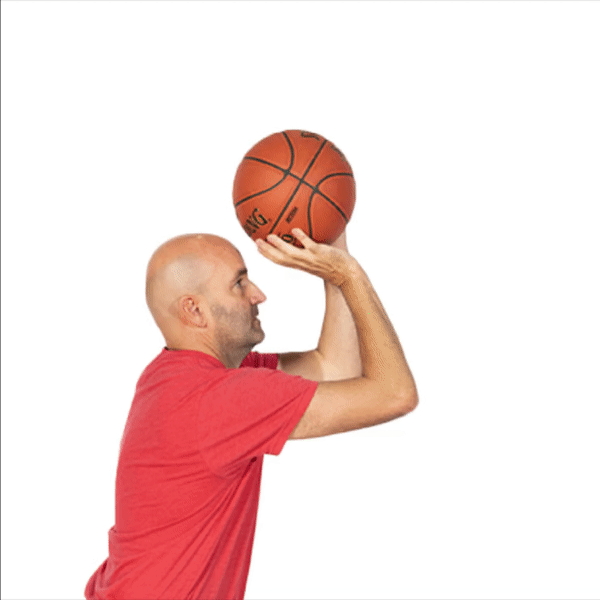
If we want to be able to lift the ball up in the air and drop it down on the hoop, we need to get the shooting hand under the ball at the set point. Many players that struggle with their arc end up with their hand towards the back of the ball at the set point, and this will cause the hand to push the ball forward rather than up.
Once the hand is in position, we want to make sure that we have our elbow low enough at the set point to be able to lift, and actually create a lifting motion with the elbow. If the elbow is too high at the set point then there won’t be any room to actually lift during the shooting motion. And if the elbow starts low but doesn’t lift, the ball will be travelling forward producing a flat shot.
So when you are working on improving your arc, focus on your set point and the moves you make out of the set point.
Still having a hard time generating arc? Want a series of drills to help build habits that create more arc? Click here to start making more shots.
IS THERE SUCH A THING AS TOO MUCH ARC?
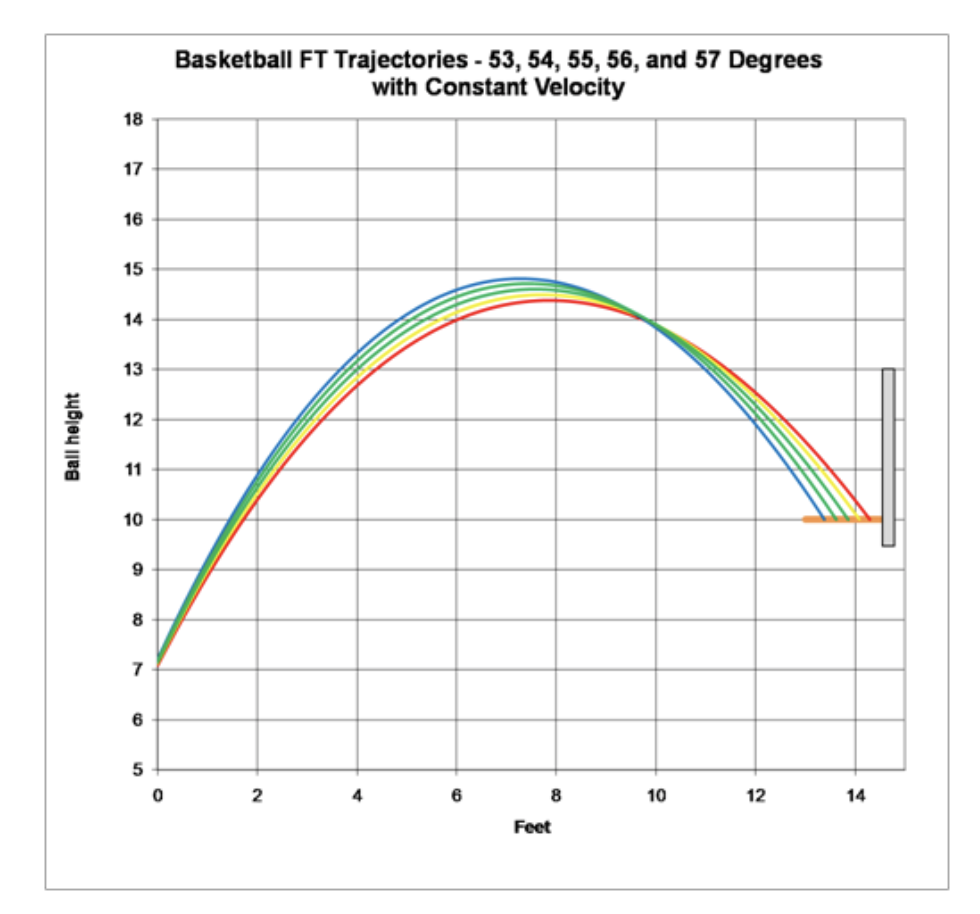 But beware that you can have too much arc. Having too much arc can actually make it very difficult for you to control the distances of your shot.
But beware that you can have too much arc. Having too much arc can actually make it very difficult for you to control the distances of your shot.
When you shoot around 45 degree arc, slight differences in force from shot to shot will only result in slight differences in distances. Once the arc is into the 50+ degree range, slight differences in force lead to much BIGGER differences in distance.
So while we do want the elbow lifting, we also want the shooting hand moving forward at the same time. We don’t want a follow through that is going straight up in the air.
Knowing WHAT to do is one thing… knowing a proven way to learn HOW is a whole other thing… CLICK HERE TO GET THE DRILLS THAT HAVE HELPED PROS MAKE 30% MORE SHOTS IN ONE SEASON.
HOW DO YOU KNOW IF YOU HAVE ENOUGH ARC?
How do you know if you are getting good arc? There are a couple of things you can check.
First, is the elbow of your shooting hand getting above your eye level as the ball is leaving your hand? Take video of yourself from the side and check.
Secondly, you can look at where the apex of your shot is. If you are shooting from around free throw line distance, I’d like the ball to level with the top of the backboard at its highest point. If you are further out, the apex will need to be a little higher.
You can try to estimate it yourself, but that can be tough for the shooter. It is better to either have a trusted player or coach to stand on the sideline and watch for you, or set up a camera to record.
Avoid going by your feel. All you will be measuring is how “comfortable” something is, and comfortable might not be correct. Take the time to see for sure.
Don’t waste time with drills that don’t work. CLICK HERE TO LEARN THE DRILLS THAT GET RESULTS.
WHAT DRILLS AND PROGRESSIONS SHOULD I BE DOING?
I’ve worked with two NBA players that each had 39 degree arc. VERY flat.
In simple terms, they both had the same thing to work on – getting more arc on the ball.
But if you looked at both players shooting you’d never guess they were working on the same things. Their shots couldn’t have looked more different.
So unfortunately, if I tried to explain all the different things you need to be aware of and do to improve arc, the blog would break the internet.
But I can still help…
I took the time to record everything I knew about how to effectively generate ARC in my SHOT DEVELOPMENT SYSTEM “FLUIDITY AND ARC”.
All the drills that I use to isolate the habits, followed by all the ways that I layer drills to help players apply what they are learning into game situations.
Over 60 videos in all, over 2 hours of video content, 20+ drills and progressions explained in detail, and presented to you in the order I want you doing them.
All the guess work is gone. You just need to follow the system, stay patient, and get the results.
CLICK HERE TO FIND OUT HOW TO FINALLY START BECOMING A BETTER SHOOTER.


